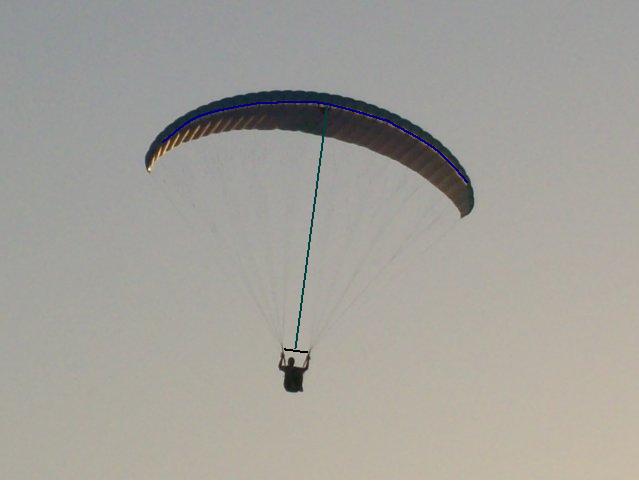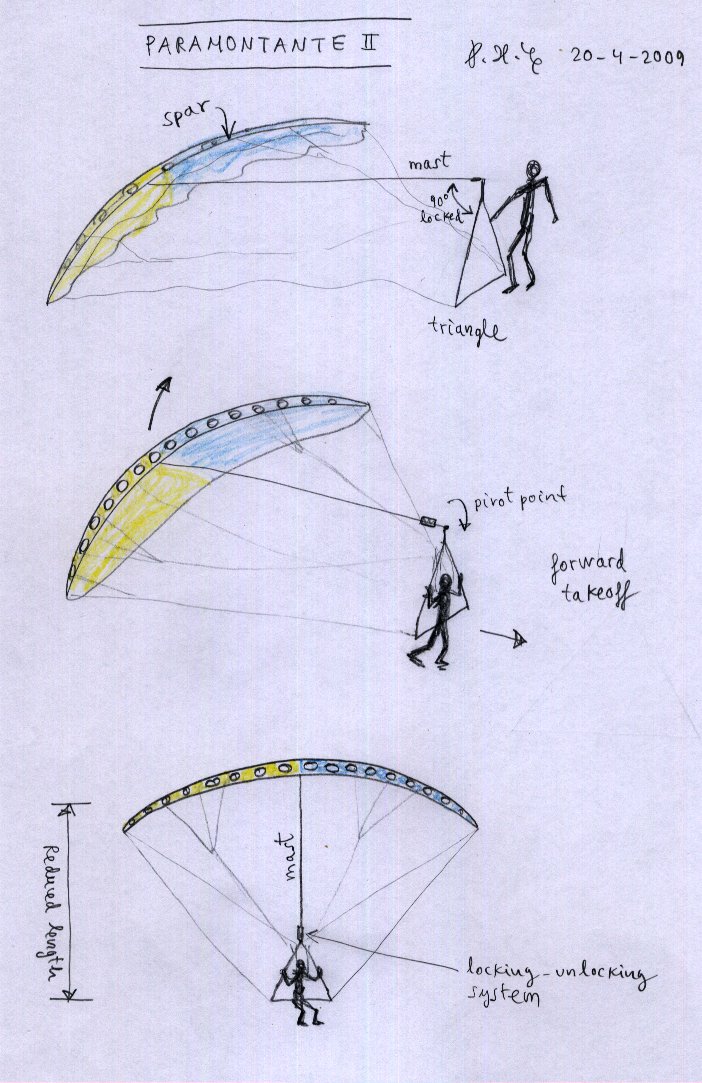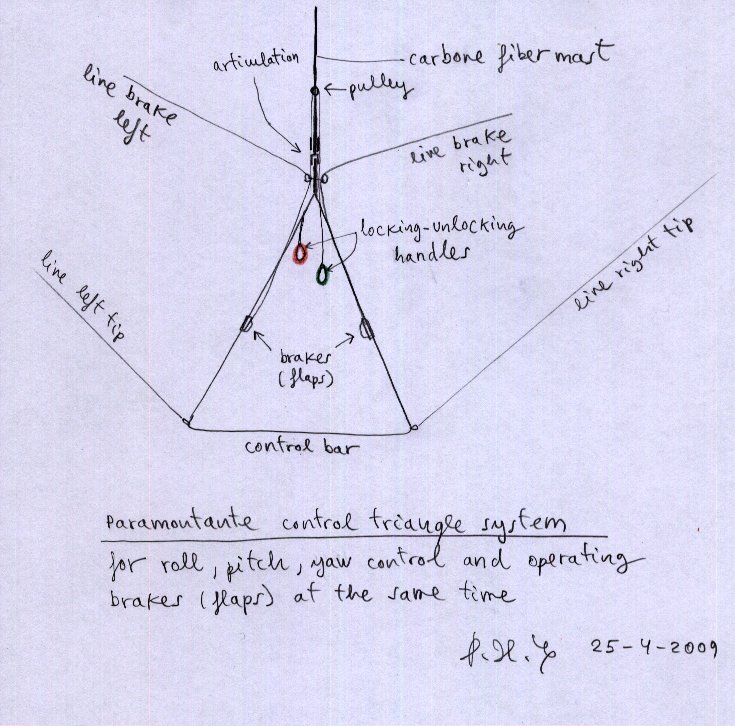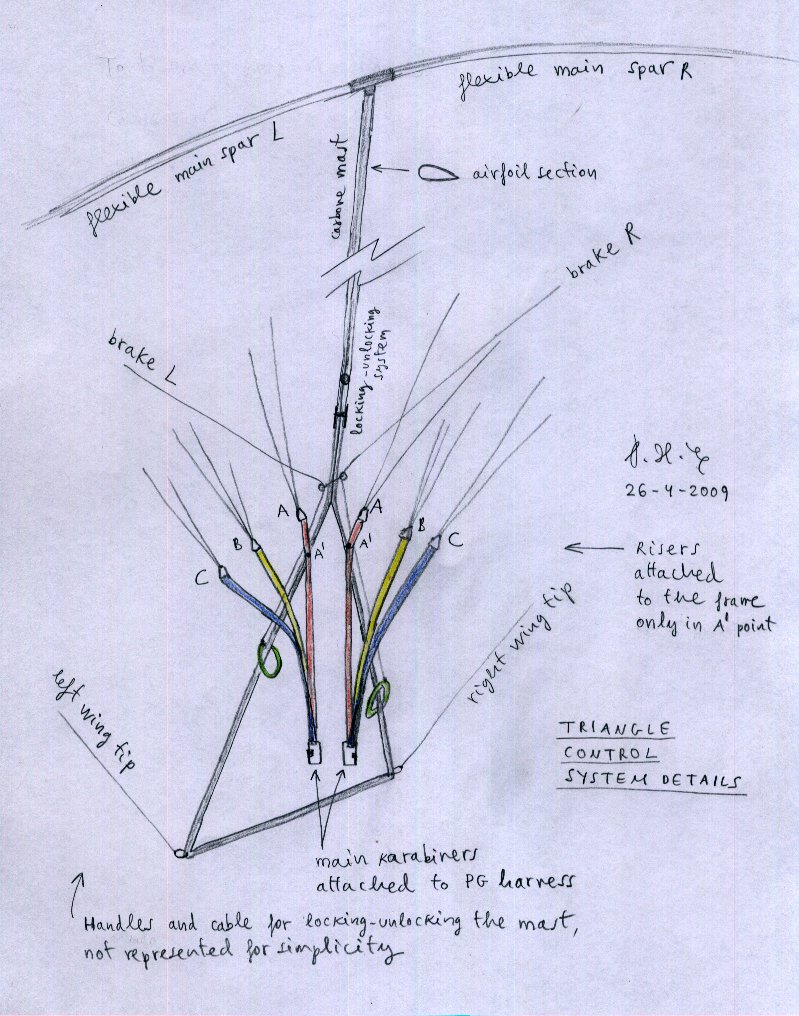|
LIFT is tracking the
explorations project termed Paramontante by Juan Salvadori of Argentina. We have asked
that Juan Salvadori of
CZwings enter primary data in his first language; our translations to other languages
is a secondary project. Discussion is invited:
Editor@UpperWindpower.com The general
concern direction in Juan Salvadori's focus has also been part of discussions by
others such as researcher developer Brett Snellgrove and
Pere H. Casellas
of Laboratori d'envol, and
others; their contributions are invited to this folder. We invite
expert translations to other languages; thanks: English, German, Chinese,
Japanese, French, Russian, ... and more.
Are there some final formats within or near the Paramontante that will benefit foot-launched gliding? |
|
| Hi, this is a description of the Paramontante
and its history and results in Spanish. I think soon we will be developing
a new Paramontante. We will keep LIFT abreast of developments.
[Translations so far, please improve:
English, ] En Febrero del año 2000 hice el PARAMONTANTE con el fin de minimizar el riesgo en las plegadas. Luego de haber analizado varios métodos posible como perfiles reflex rígidos, largueros flotantes dentro del ala, dispositivos en las bandas que enrrollaban el suspentaje cuando ala plegaba evitando corbatas, bocas extragrandes que se abrían con válvulas al plegar el ala, varilla rígida de borde de fuga, elementos inflables similar a los usados en kitesurf, etc,etc. Pero simpre estaba el fantasma de caer dentro de la vela como pasó tantas veces costandole la vida a varios pilotos... alcanza con hacer una pérdida profunda con el parapente y soltar los comando en el momento equivocado para verse en un grave problema!!!. Un día despegando con mi parapente por remolque a pocos metros del suelo y en buen ascenso (mientras el vehículo me traccionaba) tuve una plegada muy grande, yo estaba seguro que los parapentes no plegaban en actitud de trepada pero me equivoqué... la plegada puede venir en cualquier momento y con cualquier parapente. En ese momento entendí que a pesar de hacer las cosas muy bien y con cuidado, el parapente puede quitarte la vida en un instante y aunque no es algo común lo que me sucedió a mí, también puede pasar. Entonces sentí envidia de las otras aeronaves de vuelo libre (Hang
Gliders, Planeadores Rígidos etc.) que pueden volar en turbulencia sin
mayores riesgos, pero había aprendido a disfrutar de la simpleza,
comodidad y libertad del Parapente. Mi primer Parapente planeaba 3:1 y caía casi 2 metros por segundo, pero ya
había parapentes que planeaban 9:1 por lo que se podía perder algo de
rendimiento y todavía estar muy por arriba de esos 3:1 de mi primer
parapente. Entonce si convertía un parapente de buen rendimiento en Paramontante,
tendría la aeronave ideal: liviana, práctica, muy fuerte (8G), simple de
volar, transportable y con posibilidad de despeque de casi cualquier lugar. Para su desarrollo usé un parapente BICLA muy viejo, cos cañas de pescar de 4 metros cada una (Larguero) y al montante lo hice de madera de pino en dos tramos de 25mm de sección. Todo el sistema era muy liviano y frágil, pero cumplía perfectamente con su trabajo, eso me permitió hacer todas las pruebas de inflado y constatar que el parapente puede sostener sin inconvenientes la estructura y que ésta evita que el ala pliegue inclusive con el borde de ataque muy aplastado por la baja incidencia. El objetivo no era que el larguero soporte grandes cargas negativas, sinó que evite que el ala adopte configuraciones posibles para corbatas o que tarde mucho en reabrirse. Si el borde de ataque queda en su lugar, entonces el ala tardará sólo un
instante en volver a al vuelo normal, y de esa manera podemos conservar la
posibilidad de hacer bandas B o inclusive orejas si es que el larguero no
ocupa toda la envergadura. Espero pronto poder hacer otro Paramontante y poder volarlo en térmicas y
turbulencia para terminar con su desarrollo inicial. El Paramontante depende en gran medida de los materiales para evolucionar,
en el parapente los materiales están llevados al límite y se hace difícil
mejorar sin arriesgar la seguridad de los pilotos.
http://www.EnergyKiteSystems.net/Lift/hgh/Paramontante/images/Paramontante2.jpg
[Ed: The triangle control system in a hang glider with hung pilot behind the triangle control frame was used in hang gliding at least by 1908 over 100 years ago; now in Paramontante there is a fresh visiting of the triangle control system with modifications appropriate to the new challenges of the Paramontante. ] There are a great many cousin-to-Paramontante and lateral topics that may affect the evolution of Paramontante. Notes, comments, and essays within this arena are invited to LIFT to be gathered and presented.
|





